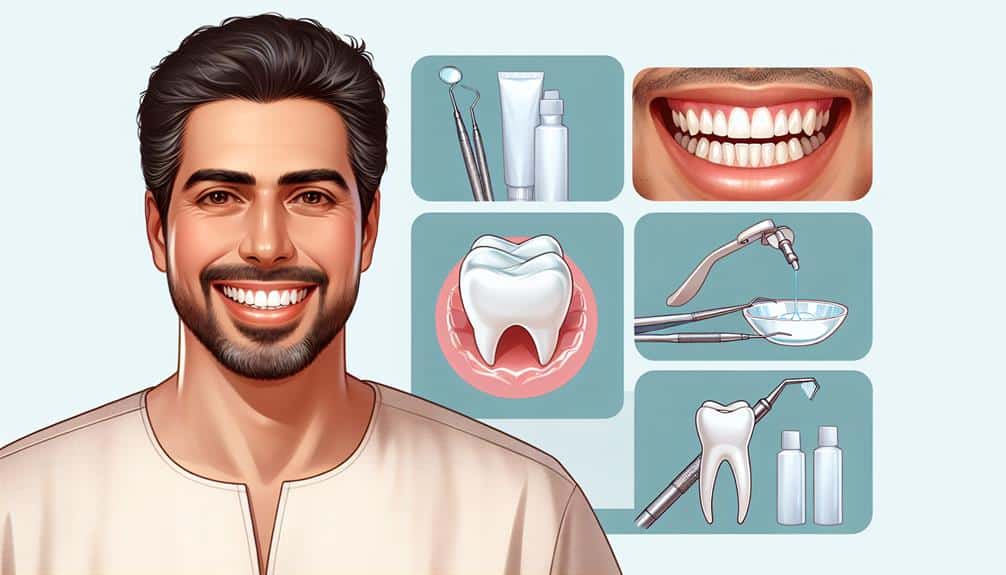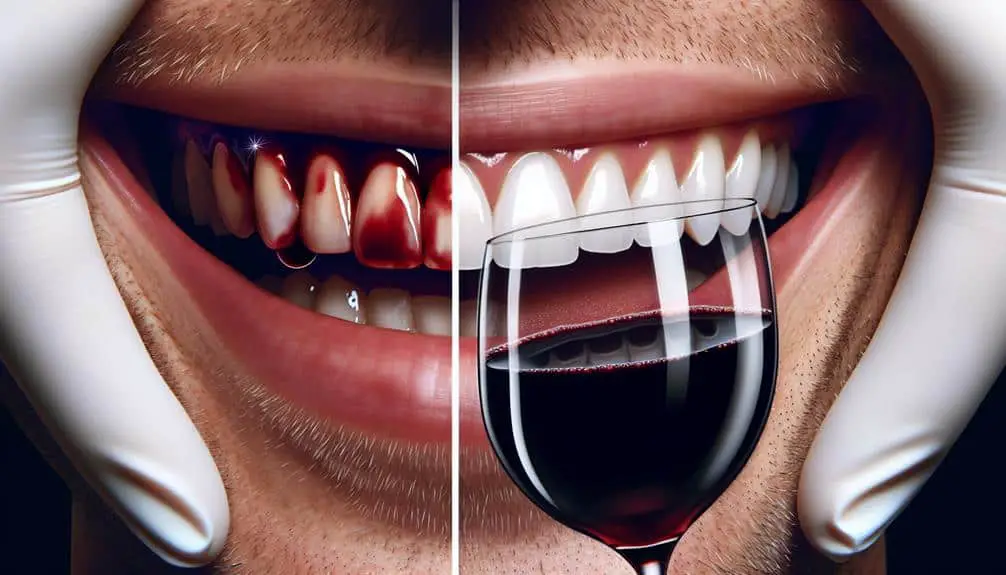Stubborn stains resist gel removal as gels may not reach deep enough to eradicate them completely. Gels need proper penetration to eliminate stains at the fabric's core. Factors like diet, fabric type, and gel composition influence effectiveness. Match gel type to stain for best results. Enhance outcomes by pre-treating stains and ensuring even gel application. Follow instructions closely for top performance. Understanding these aspects can improve stain removal success.
Key Points
- Matching gel type to stain chemistry is crucial for effective removal.
- Inadequate pre-treatment may hinder gel penetration and stain breakdown.
- Incorrect gel concentration or application duration can impact stain removal.
- Fabric sensitivity and compatibility with gels influence stain removal success.
- Exceeding recommended gel application time can damage fabric and reduce effectiveness.
Gel Penetration and Stain Removal
To effectively remove stubborn stains, understanding the penetration of gels is essential in targeting and breaking down the blemishes. Gel absorption plays a vital role in the efficacy of stain removal. Gels are formulated to penetrate deep into the fabric, allowing them to interact with the stain at its core. The ability of gels to adhere to the surface of the stain is directly related to their absorption properties. When a gel is applied to a stain, it adheres to the surface area, creating a concentrated environment for the active ingredients to work effectively.
Stain adhesion, on the other hand, refers to the bond between the stain molecules and the fabric. This adhesion can vary depending on the type of stain and the fabric it has affected. Gels work by breaking down this adhesion, loosening the grip of the stain on the fabric. Understanding how gels interact with stains at a molecular level is key to maximizing their effectiveness in removing stubborn blemishes.
Lifestyle Habits Impacting Gel Effectiveness
Understanding how your daily habits impact the effectiveness of gels in removing stubborn stains is essential for achieving peak results in stain removal. Your diet choices play a significant role in how well gels work on stains. Foods high in oils or fats can create a barrier that prevents the gel from penetrating the stain effectively. Additionally, consuming acidic foods can alter the pH balance of the stain, making it harder for the gel to break it down. Maintaining a balanced diet with plenty of water can enhance the effectiveness of stain removal gels.
Moreover, your cleaning techniques also impact how well gels can remove stubborn stains. Properly pre-treating a stain by gently blotting and removing any excess material before applying the gel can ensure better penetration and overall effectiveness. Additionally, following the instructions on the gel product regarding application and dwell time is crucial for peak results. By being mindful of your diet choices and cleaning techniques, you can maximize the effectiveness of stain removal gels.
Chemical Composition and Stain Types
When considering the effectiveness of stain removal gels, it's essential to understand the correlation between their chemical composition and the types of stains they target. Stain chemistry plays a vital role in how well a gel can perform in removing specific stains. Different types of stains require different approaches due to their varied chemical compositions. For instance, protein-based stains like blood or egg are best tackled with enzymatic gels that break down proteins effectively. On the other hand, oil-based stains such as grease or lipstick necessitate gels with surfactants to emulsify the oils for removal.
The efficacy of stain removal gels also heavily relies on their gel formulation. The balance of ingredients in the gel formulation determines its effectiveness against certain stain types. A well-formulated gel will have the right combination of enzymes, surfactants, solvents, and other active agents tailored to combat specific stains. Understanding the chemical composition of stains and selecting gels with compatible formulations is key to achieving successful stain removal outcomes.
Stubborn Stains Vs. Gel Formulas
An important aspect in effectively combating stubborn stains is the precise alignment between the targeted stain type and the specific formulation of the gel being utilized. When dealing with stubborn stains versus gel formulas, understanding the interplay of detergent effectiveness and fabric interaction is vital. Here's what you need to take into account:
- Detergent Effectiveness: The ability of the detergent within the gel to break down the components of the stain is pivotal. Different stains require different detergent strengths, so matching the right detergent effectiveness to the stain type is essential for successful removal.
- Fabric Interaction: The way in which the gel interacts with the fabric can impact stain removal. Some fabrics may be more sensitive to certain chemicals in the gel, requiring a tailored approach to prevent damage while effectively removing the stain.
- Temperature Impact and Time Duration: Temperature and the duration for which the gel is in contact with the stain can have a significant influence on the outcome. Understanding how temperature impacts the gel's performance and the ideal time duration for maximum stain removal efficiency is key to tackling stubborn stains effectively.
Enhancing Gel Results for Tough Stains
To optimize the effectiveness of gel formulas on tough stains, consider implementing strategic application techniques. Begin by pretreating the stain before applying the gel. Stain pretreatment helps break down the stain's structure, making it easier for the gel to penetrate and lift it from the surface.
After pretreatment, make sure that the gel is applied generously and evenly over the stained area. The concentration of the gel is essential; using a higher concentration can increase the gel's effectiveness in tackling tough stains.
Additionally, pay attention to the duration of the gel application. Letting the gel sit for a longer period can allow it to work more effectively on stubborn stains. However, be cautious not to exceed the recommended duration to prevent damage to the material.
Frequently Asked Questions
Can Using a Higher Concentration of Gel Help With Removing Stubborn Stains More Effectively?
When tackling stubborn stains, increasing gel concentration can enhance effectiveness. For instance, in a study, a higher gel concentration of 10% proved more successful at removing tough stains compared to lower concentrations. Experiment with techniques for best results.
Are There Any Specific Types of Fabrics or Materials That Gels Are Not Recommended for Use On?
When applying gels for stain removal, consider fabric compatibility. Some materials, like delicate silk or water-sensitive leather, may not react well to gels. Understanding material sensitivity and stain resistance is key to effective gel application.
How Long Should I Wait Before Reapplying Gel on a Stain That Hasn't Completely Disappeared?
As you wait for the gel to work its magic, consider the waiting period for maximum effectiveness. Timing is important for stubborn stains. Reapplication should be done strategically, allowing the gel to penetrate and lift the stain completely.
Are There Any Environmental Factors That Can Impact the Effectiveness of Stain Removal Gels?
Temperature fluctuations and humidity levels can impact stain removal gels' effectiveness. Sun exposure may alter their chemical composition, reducing efficacy. Pollution effects can also hinder their ability to break down stains. Consider these environmental factors for best results.
Can Combining Different Types of Stain Removal Products, Such as Gels and Sprays, Improve the Overall Results on Tough Stains?
When dealing with tough stains, combining different products like gels and sprays can enhance effectiveness. By pre-treating stains with sprays before applying gels, you optimize results. Experiment to find the best approach for your specific stains.



